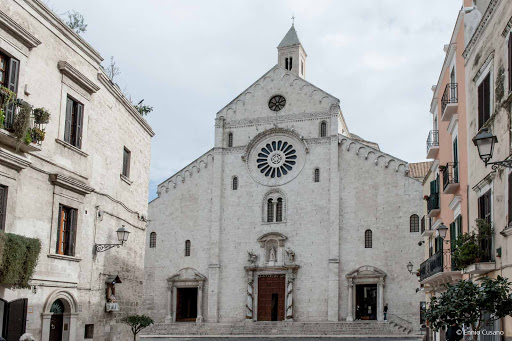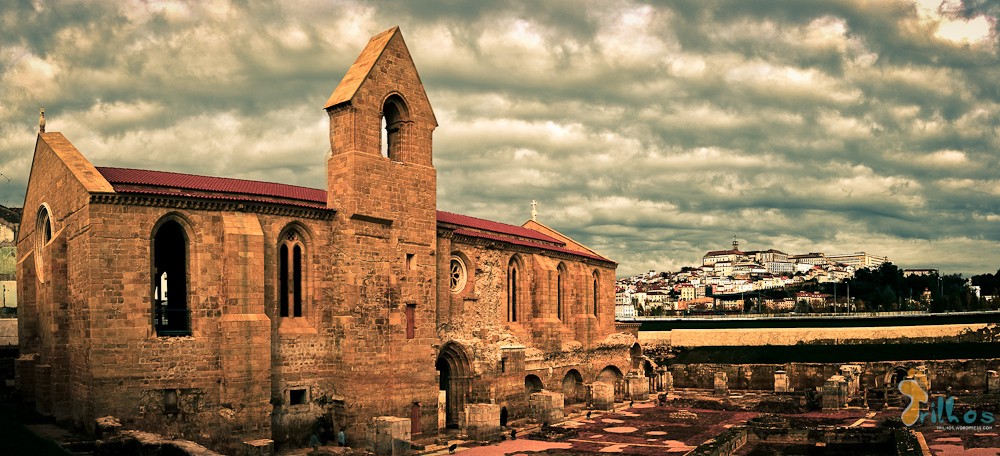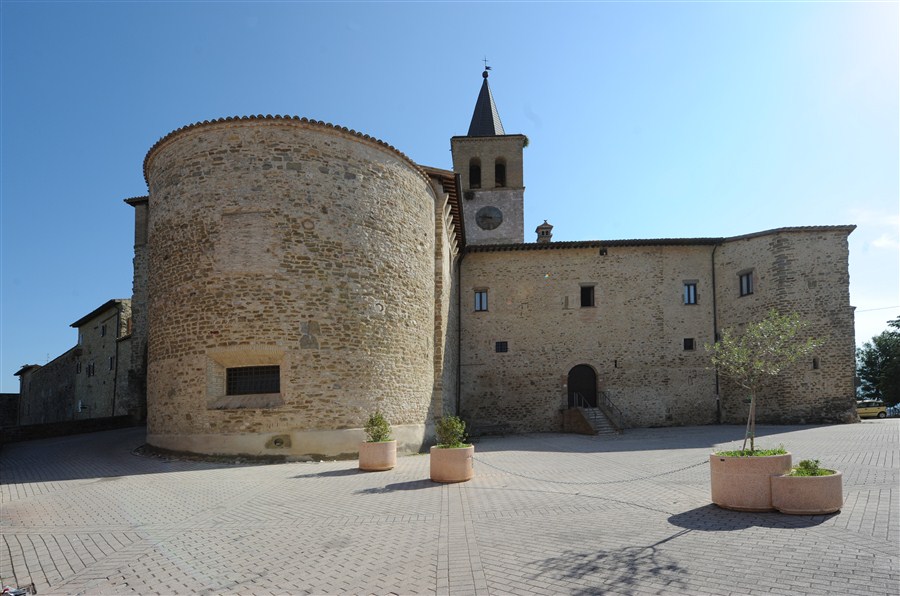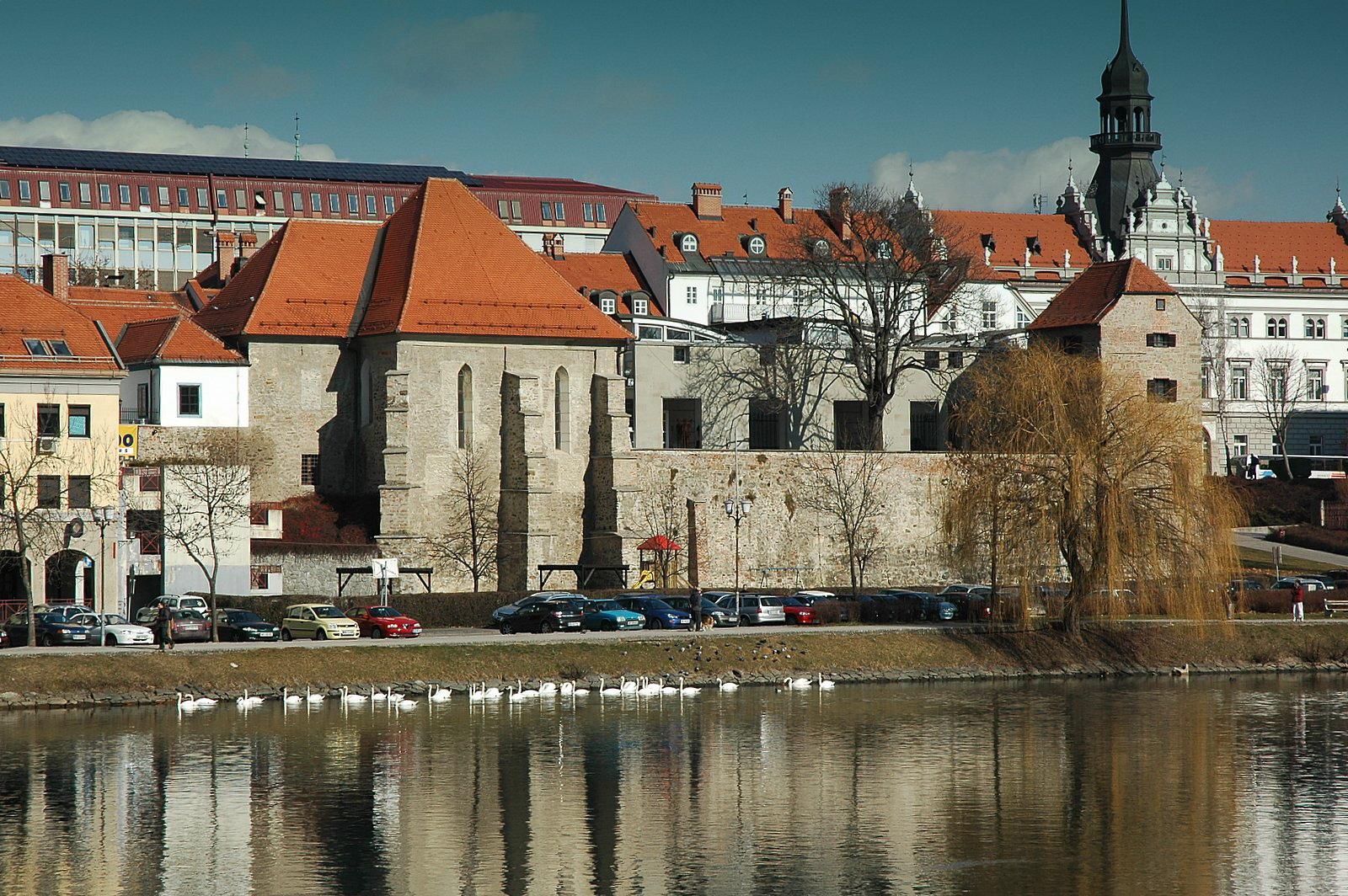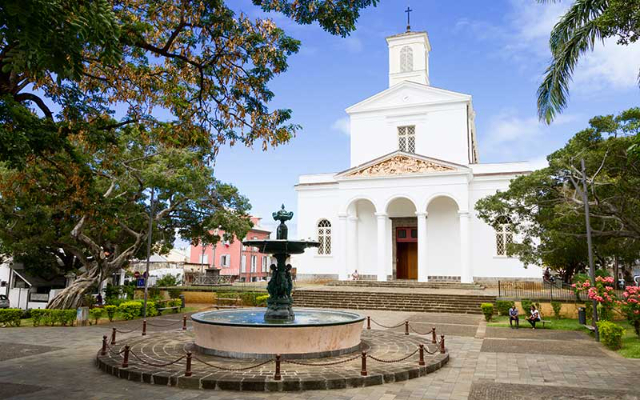The Cathedral of San Sabino was built between the twelfth and thirteenth centuries on an older place of worship, the ruins of the Byzantine cathedral destroyed by William I called the Malo (1156). The ancient church can be dated at least to the 6th century. Below the central nave are the remains dating back to an earlier period: a structured nave with three naves, square pillars and cross vaults with herringbone blocks, now used as a crypt. The reconstruction of the building is due to Archbishop Rainaldo, at the end of the 12th century. In the Crypt are preserved the relics of St. Sabino, bishop of Canosa. The Cathedral is an important example of Apulian Romanesque architecture: the simple façade is tripartite with pilasters and crowned by architects; the three portals date back to the 11th century, but were remodelled in the 18th century. The upper part is decorated with single lancet windows, a mullioned window and a rose window decorated with monsters and fantastic beings. On the sides there are deep arches on which run exhausted galleries (rebuilt); at the intersection of the arms stands the dome, polygonal on the outside with frieze; on the left the large cylindrical construction of the trulla, the ancient baptistery turned into a sacristy in the seventeenth century, and not far away the bell tower with windows and a high spire (rebuilt with stones similar to the original). The interior, stripped of all the baroque structures, is simple and solemn, with a middle nave that houses the recomposed pulpit with original fragments from the 11th and 13th centuries, the altar ciborium and the episcopal chair of the presbytery. Under the transept is the crypt, transformed in the eighteenth century, where the Byzantine table of the Virgin Odegitria, the main patron saint of the city together with St. Nicholas, is also preserved. The pipe organ was built by the Ruffatti brothers and restored in 2005 by Gustavo Zanin.
